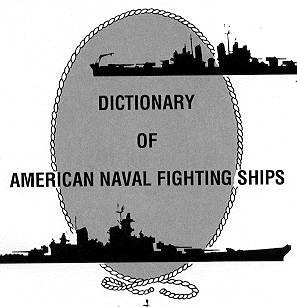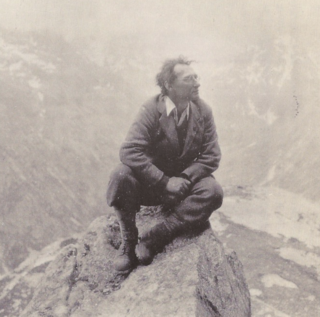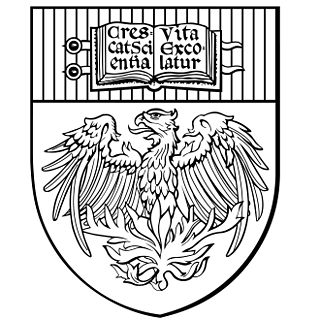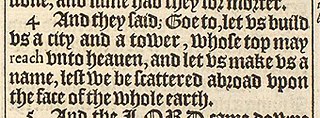History
The work was begun in 1925 by William A. Craigie. The first volume appeared in 1936 under the editorship of Craigie and James R. Hulbert, [4] a professor of English at the University of Chicago. The four volume edition was completed with the help of George Watson and Allen Walker Read. The group referenced early literature depicting American regional accents, including three novels by John Neal: Brother Jonathan (1825), Rachel Dyer (1828), and The Down-Easters, &c. &c. &c. (1833). [5]
The work was one of the sources for the Dictionary of Americanisms , c. 1952, prepared under the direction of Mitford Mathews. A similar, but unrelated modern work, the Dictionary of American Regional English, has been compiled to show dialect variation.

The Oxford English Dictionary (OED) is the principal historical dictionary of the English language, published by Oxford University Press (OUP), a University of Oxford publishing house. The dictionary, which published its first edition in 1884, traces the historical development of the English language, providing a comprehensive resource to scholars and academic researchers, and provides ongoing descriptions of English language usage in its variations around the world.

Thomas Robert Malthus was an English economist, cleric, and scholar influential in the fields of political economy and demography.

The Dictionary of American Naval Fighting Ships (DANFS) is the official reference work for the basic facts about ships used by the United States Navy.

Charles Talbut Onions was an English grammarian and lexicographer and the fourth editor of the Oxford English Dictionary.

Sir William Alexander Craigie was a philologist and a lexicographer.

Ivor Armstrong Richards CH, known as I. A. Richards, was an English educator, literary critic, poet, and rhetorician. His work contributed to the foundations of New Criticism, a formalist movement in literary theory which emphasized the close reading of a literary text, especially poetry, in an effort to discover how a work of literature functions as a self-contained and self-referential æsthetic object.

John Ramsay McCulloch was a Scottish economist, author and editor, widely regarded as the leader of the Ricardian school of economists after the death of David Ricardo in 1823. He was appointed the first professor of political economy at University College London in 1828. He wrote extensively on economic policy, and was a pioneer in the collection, statistical analysis and publication of economic data.

The Shorter Oxford English Dictionary (SOED) is an English language dictionary published by the Oxford University Press. The SOED is a two-volume abridgement of the twenty-volume Oxford English Dictionary (OED).

Robert Edward Stevenson was a British-American screenwriter and film director.

A Dictionary of Americanisms on Historical Principles is a dictionary of English words and phrases that originated in the United States. The two-volume dictionary was edited by Mitford M. Mathews and was published in 1951 by University of Chicago Press.

The University of Chicago Press is the university press of the University of Chicago, a private research university in Chicago, Illinois. It is the largest and one of the oldest university presses in the United States. It publishes a wide range of academic titles, including The Chicago Manual of Style, numerous academic journals, and advanced monographs in the academic fields. The press is located just south of the Midway Plaisance on the University of Chicago campus.

The New Grove Dictionary of Opera is an encyclopedia of opera. It is the largest work on opera in English, and in its printed form, amounts to 5,448 pages in four volumes.

The Sangita-Ratnakara, संगीतरत्नाकर,, literally "Ocean of Music and Dance", is one of the most important musicological texts from India. Composed by Śārṅgadeva (शार्ङ्गदेव) in Sanskrit during the 13th century, both Carnatic music and Hindustani music traditions of Indian classical music regard it as a definitive text. The author was a part of the court of King Simhana of the Yādava dynasty whose capital was Devagiri, Maharashtra.
The Dictionary of the Older Scottish Tongue (DOST) is a 12-volume dictionary that documents the history of the Scots language covering Older Scots from the earliest written evidence in the 12th century until the year 1700. DOST was compiled over a period of some eighty years, from 1931 to 2002.
Nationality words link to articles with information on the nation's poetry or literature.
A Dictionary of Canadianisms on Historical Principles (DCHP) is a historical usage dictionary of words, expressions, or meanings which are native to Canada or which are distinctively characteristic of Canadian English though not necessarily exclusive to Canada. The first edition was published by W. J. Gage Limited in 1967. The text of this first edition was scanned and released as a free-access online dictionary in 2013.
The history of English grammars begins late in the sixteenth century with the Pamphlet for Grammar by William Bullokar. In the early works, the structure and rules of English grammar were based on those of Latin. A more modern approach, incorporating phonology, was introduced in the nineteenth century.
James Craigie Robertson was a Scottish Anglican churchman, canon of Canterbury Cathedral, and author of a History of the Christian Church.

The inanimate whose refers to the use in English of the relative pronoun whose with non-personal antecedents, as in: "That's the car whose alarm keeps waking us up at night." The construction is also known as the whose inanimate, non-personal whose, and neuter whose.
This bibliography of James Madison is a list of published works about James Madison, the 4th president of the United States.













